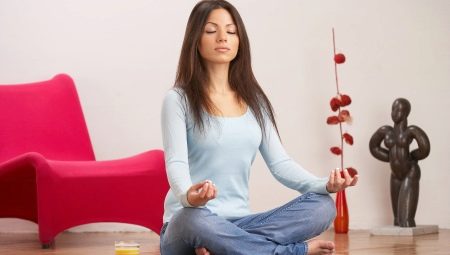You need to believe in yourself, but it will not be superfluous to help your destiny become happy and amazing. Try to make a stunning positive change in your life. To do this, you just need not to be lazy. Believe in your strengths and in your "I". Various meditations will help you in this matter. If you do not believe in them, then classes are better and do not start. And if you believe, then read the following information. It will definitely help to understand all the subtleties of this issue.

How to prepare?
This is easy enough to do. Follow the recommendations of experienced people. However, they may not be performed at all. It all depends on your desire. So where to start? With general rules. You cannot eat before meditation. Eat about an hour before class. Let the food digest a little, and then you can safely get down to business. Otherwise, you will not be able to take a comfortable pose or fall asleep during the session.
It is also advisable to take a shower before the session. This will give you a feeling of cleanliness and freshness. Remember, water tends to positive and pacifies. These factors affect a pleasant outcome. Create a pleasant atmosphere around you. Let the room be warm, clean and comfortable.
If you are a little tired, then relax. You can sleep a bit, go for a walk, solve a crossword puzzle, listen to calm music. It all depends on your preference.
After trouble, stress “builds up” in your muscles, and this has a bad effect on the nervous system. After receiving a portion of the negative, you should throw it off your shoulders. To get rid of a bad mood, Go in for physical education. Perform simple exercises or running in place.So you enrich your body with oxygen and stimulate blood flow to all important organs.


Then proceed to more responsible actions. They concern both the body and the soul. Let's consider them in more detail.
Internal mood
Very important. If you are not ready or you have no mood, then it is better to postpone the beginning of classes. You need to understand that meditation requires a lot of energy. You should feel that you are filled to the brim with it. Any person can measure their energy potential without outside help. To do this, just look inside yourself. If you feel an inner emptiness, you should first rest, and then proceed to class.
Besides You should have a good and disposable mood. If you have just quarreled with a neighbor on the landing, you are being pounded with anger, then it is better to transfer the session to another time.
Eating an apple or pear will help regulate the energy balance. Moreover, sweet fruits cheer up. Then take a warm shower. If you feel the stabilization of your condition - start practicing.

Timing
Of course, everything should depend on your rhythm of life. Someone likes to work before bedtime, and someone prefers to do all things in the morning. Therefore, with the start of classes you must decide yourself. There is one more point. There are various Buddhist directions, and each one requires a special time of day to practice. Let's consider them in order.
- Buddhist meditation. These classes occupy a special place in the life of Buddhists. Meditation in this direction is a combination of spiritual practices. This approach requires removal from everyday life. Therefore, for Buddhist meditations, it is necessary to choose the most comfortable time of day. For example, Theward's school and its teachings require that a person go to bed early and wake up early. Morning among lovers of this direction begins with meditation. The most keen on learning people practice meditation also in the afternoon (from 15 to 17 hours) and even in the evening.
- Tibetan Buddhism provides for group practice early in the morning (from 5 to 6 hours). Remember that it is Tibetan Buddhism that is associated with astronomy, which recommends practicing in the following hours: 6 a.m.; 12 a.m; 17 hours and 24 hours.
- Zen buddhism It stimulates the desire to look deep into oneself. Therefore, in this direction, the ideal time is considered to be half an hour after waking up. You can still do the practice a couple of hours before going to bed.
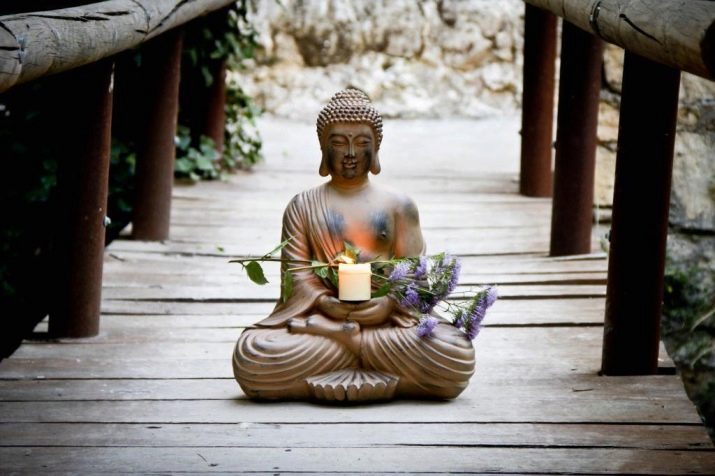
From the foregoing, it becomes clear that there is an exact time for practicing certain practices. However, anyway, the issue of timing requires additional consideration. So in the morning your body wakes up. He is ready for the start of a new day. During these hours all your chakras are open. Therefore, it is believed that morning is the best time to meditate.
Daytime hours can be chosen for those who never get up early in the morning. It must be remembered that a person is an individual. Each individual lives according to his schedule. If you have a schedule so that you can’t get up early in the morning, then afternoon will be your best option for meditation. If you consider that during the day all people are at work or go about their business, then no one can stop you.
And finally, the evening. After work, there is some fatigue. However, it must be remembered that meditation has a beneficial effect on the body. Holding them just before bedtime will be a good incentive to get rid of insomnia, anxious dreams. Healing meditations will benefit you at this particular time of day.
Tip: do not focus on choosing the time to practice. There are no restrictions on this issue. In addition, your body will tell you when you are ready.Better focus on keeping your classes regular and at the same time.

Space organization
Meditation directs a person to know the inner "I". But it is not forbidden to surround yourself with a comfortable space. Therefore, it is necessary to do the following.
- Allow a special room for practice. Modern people are very distracted by the constant flow of information. Your place should become a refuge for you from extraneous influences such as the Internet, TV, etc. If the apartment does not have enough space, then separate the corner in the room and create the right atmosphere in it.
- In this place there should be proper lighting (it is better to choose natural light, that is, similar to sunlight). To prevent lighting from scattering, separate your space with special curtains made of any suitable material.
- Items in this space should also be relevant. It can be various figurines, plants, things, paintings. The latter should complement the sense of integrity with the world of goodness and happiness.
- Aromatherapy also promotes relaxation and sets the body in the right way. Remember that the sense of smell of a person promotes relaxation and causes various associations.
- In the room, all the decoration should be made of natural materials. For complete convenience, it is better to buy cotton bedspreads, and custom-made furniture made of pure wood. However, the last point is optional.
- All meditations require comfort. Therefore, you need to purchase a couple of large and comfortable pillows. Things like extra soft bedding and pillows can even out your spine during class.
- The room should be well ventilated and cleaned. Remove foreign objects and animals from it.
- Music contributes to overall mood. Therefore, purchase a special device and download music for meditation into it.
- It is necessary to lay a soft carpet on the floor. It will give the atmosphere the greatest comfort. In addition, your legs will not touch the cold floor and freeze.
- All items related to meditation should be in the room on an ongoing basis.. This will create a special connection between objects and the room.

Optimal posture
There is such a thing - meditative asana, i.e. posture. A sense of comfort should surround you. If you accept an uncomfortable position, you will constantly switch to discomfort. Conclusion: the asana should provide an excellent position for the torso and help focus on the main lesson. All poses just seem too heavy. In fact, as soon as you can properly implement them, you will realize that you were wrong.
The human body during meditation is a complete reflection of the state of mind. A correctly accepted body posture will accompany proper meditation.

There are many poses for meditation. Especially popular are sitting postures. The main thing here is to decide on the position that will be most convenient for you. So, consider the best of them.
- Lotus position is no less demanded. However, it requires flexibility and good hip stretching. To perform, place the limbs on both hips and determine the desired position.
- A comfortable posture is that of Siddhasana. In this case, the heel of the right foot is pressed to the fifth point. The left leg is superimposed on top. The heel of this leg should rest against the pubic bone.
- Virasana is considered a hero pose. To do this, you need to kneel and spread your limbs. Then you need to sit the fifth point on the floor so that the calf touches the outside of the thighs.
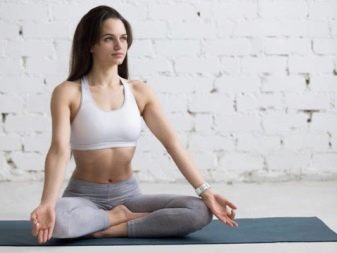
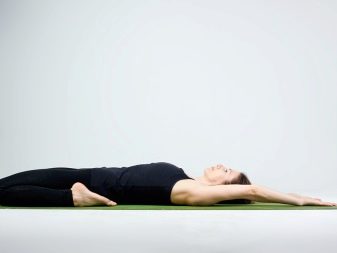
Poses should be comfortable. Meditation is not a sport. Therefore, take a position that is convenient for you. Next, consider the poses that can be recommended to beginners.
- Many people do not recommend performing lying meditations, because a person in most cases falls asleep during such sessions. If you aim to calm down, then this option is quite suitable for you.
- Sukhasana translates as a pleasant pose. In this case, you need to put your legs in a cross and take a comfortable vertical position.
- The pose of the diamond is Vajrasana. It is performed by sitting on its knees, the fifth point is on the heels.
- Pose of the Halotus. Here, one leg remains lying on the ground, and the second leg moves to the parallel thigh.
- Those who cannot or are afraid to take the above poses can be meditated while sitting in a chair. In this case, the spine must be aligned. Better to find support on the back of the chair.
However, remember that during meditation people often fall asleep. If this happens, you may fall out of the chair.
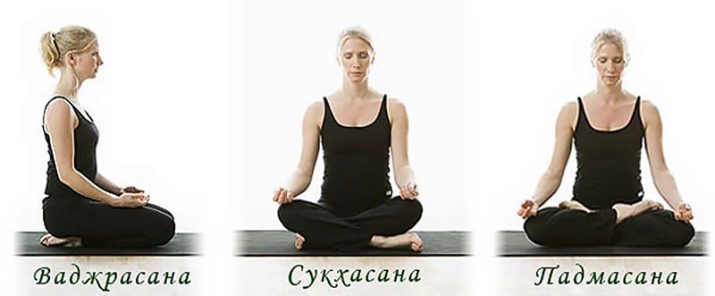
Meditation Options
There are a lot of them. Many practice meditation at home. The main thing is to learn how to independently properly manage the whole process. Therefore, the methods must be approached with a certain sequence.
To get started, find out the main secret. To enter into meditation, you must not apply a force of will.
In addition, you need to prepare yourself. The process should absorb you completely. For this, all conditions must be created, including mood, time and environment. Before you begin, create an intention and benchmark for practice. Turn on the lack of waiting. Just calm down and follow your plan. Consider the simplest technique that will become your workout. You can do this lesson at home yourself. Let's get started.
- Take a candle of any color, light it and look through the fire. If your eyes begin to get tired, still keep looking at the fire. Soon a colorful rainbow will appear around the flame. This means that you are on the right track.
- Inhale air and exhale freely. Let your thoughts go with the flow. Peer into the river along which thoughts flow, and watch your breath. The process should cover you, and you will immerse yourself in it completely.
- Ask yourself the question: “Who am I?” and don’t think about the answer option. Just feel it.
- Imagine that you are sitting on the edge of the coast, and someone Light and Good is watching you. He wishes you only good moments. From this you are joyful and warm.
- After the process is completed, ask yourself: “Did you get meditation?” If you are lost in time (an hour has passed, and it seems to you that only 5 minutes have passed), if you had tingling needles along the spine, if fire was burning in the heart region, then consider that your first meditation took place.
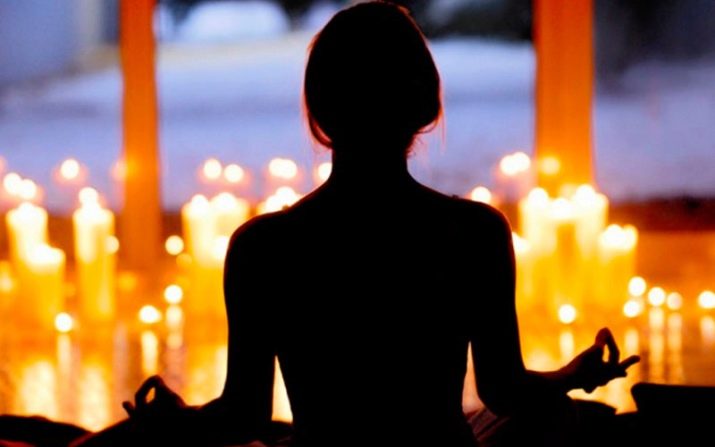
When you learn the technique of meditation, you can try, for example, the following types of meditation.
- Awareness Meditation concentrates on the here and now process. For its performance, sit on a chair, pay attention to breathing. When you begin to inhale and exhale, watch your feelings. Direct all thoughts to these breaths. Learn to enjoy this practice, and then you will understand how you feel your mind and body.
- Meditation of “Loving Kindness” will help you get positive emotions from empathy. Start by sitting in a comfortable position. Create a feeling of kindness in the heart. Gradually transfer this kindness to people or animals, then move on to the Universe. Combine universal kindness into one. You will experience great joy from this practice.
- Mantra meditation is performed while sitting. Eyes to close. Start chanting the mantra in the mind over and over again. So you create a mental vibration and go to a deep level of consciousness. Famous mantras: Om, Tak-ham, Rama, Om namah shiva, Yam, Hari om.
- Meditation TRATAKA. Fix the gaze on the candle. First do it with your eyes open, and then close them. In this case, the image must be saved.
- "Regulation of breathing" is the practice of Pranayama. With this method, you need to inhale, counting to 4, then hold your breath for 4 seconds.Then exhale for 4 seconds. and hold your breath again for 4 seconds. Repeat this several times. This practice regulates breathing and soothes.
- Contemporaries are very fond of putting Joe Dispenza into practice of meditation. This person was able to heal himself with the help of certain techniques that he himself invented. For example, the “Incoming Water” practice is suitable for those who want to get harmony in everything that surrounds him. The Placebo Self Method can promote healing.

Beginner Mistakes
Many really want to do meditation. However, novice people are afraid that they will not succeed. This often happens. This phenomenon occurs for the following reasons.
- Proper meditation involves total relaxation. Of course, in an apartment where children are making noise outside the wall, this is difficult to do. It's clear. Which exit? He is simple. Use headphones that completely block the sound. The best option is if a special calm music tunes in to meditation from the device. In other cases, when you are tired or have some kind of trouble (a headache, you are upset, etc.), it is better to postpone the meditation or conduct a tuning meditation. She will help to relax the whole body.
- Thoughts that are constantly present in the head can also ruin the practice.. If this happens, then you need to try to push all experiences into the background. Cooking, washing dishes, etc. will not go anywhere. Housework can be done at any other time.
- You cannot imagine what you dream about, that is, you cannot visualize what you have planned. This is especially difficult to do for those who are used to relying on common sense. In order for everything to work out, you need to overcome your consciousness. Your brain does not immediately, but will be able to replay itself. This will happen under the influence of constant training. After several classes, he will finally turn off the logical perception of the world, and then your “I” and the Universe will enter into dialogue.

Remember that meditation is a kind of conductor to the changes in your mind and in life in general. This practice is a tool that can transform your consciousness.
The human brain is used to analyzing everything, and when he begins to go into the details of the process of meditation, he becomes scared, he begins to control and block this process. That is why you are failing. So your task when doing another meditation is to in order to try to block the actions of his consciousness and go to the voice of the Higher forces.
The conclusion is this: do not listen to your mind during meditation. Gradually but surely eliminate the following errors.
- Questions: “What is happening? How it works?" - involuntarily arise in consciousness. TThese questions always distract a person during meditation. When you manage to go into a trance, your consciousness cannot believe it. Therefore, try not to be distracted by emotions and follow the inner voice.
- Another mistake is the assessment of the state during meditation. You always want to know how meditation works. Do not be distracted by such trifles. You just need to believe in this process.
- You can’t try and relax at the same time. These opposite states prevent you from getting the desired effect.
- If thoughts swarm in your head, and you try to disperse them, then these actions are also considered a mistake. As it is impossible to disperse rain with your hands, it is impossible to disperse thoughts in your head. As with rain, you need to wait a bit. The clouds will gradually disperse, and thoughts will gradually subside. Know, when you stop paying attention to thoughts, they will dissipate.
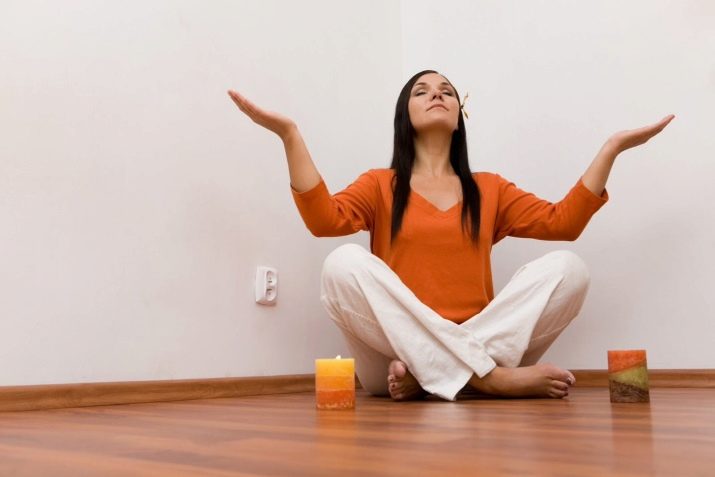
How often do you need to meditate?
Any practitioner will answer this question: "As often as possible." And that's why. The more you meditate, the faster you will understand the essence of meditation, the faster the positive effect will come.. Especially this point needs to be considered for those who are just starting to practice meditation. You study, and each new lesson leads you to the goal. Another thing is if you do not have much time that you can devote to this hobby. Then you can be advised to choose the most optimal mode, which will allow you to combine your main activity with meditation.
If you are already up to speed, then you can practice meditation both in the morning and in the evening. Allocate about an hour of free time for this process.

